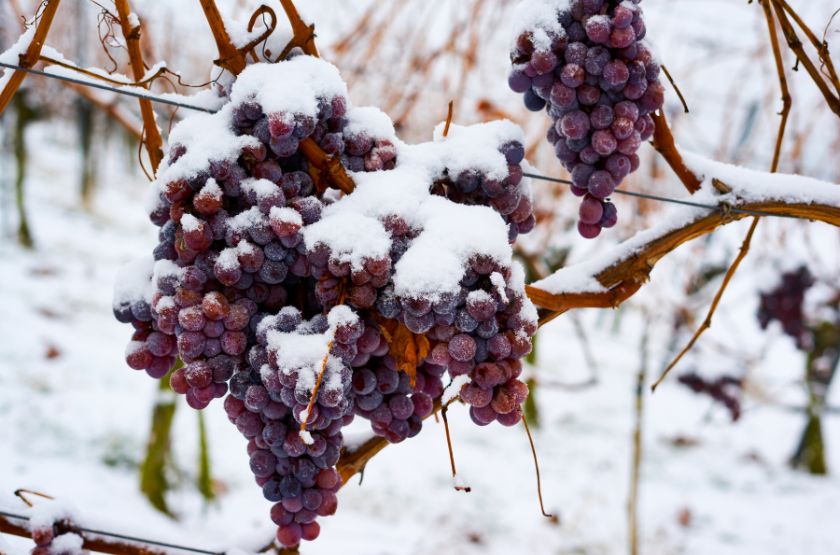
In the empire of fine wines, one exquisite variety stands out for its unique production process and unparalleled sweetness – ice wine. Often referred to as “liquid gold” or “nectar of the gods,” ice wine is a rare and luxurious treat that captivates the senses with its intense flavors and aromas. Let’s embark on a journey to uncover the secrets behind this elixir of the vineyards.
The roots of ice wine can be traced back to Germany in the late 18th century, where winemakers discovered that grapes left to freeze on the vine could produce a concentrated, lusciously sweet wine. Over the years, the tradition spread to other cold-climate regions, including Canada and Austria, where the climatic conditions are conducive to the natural production of ice wine.
What sets it apart, its distinct and demanding production process. Unlike customary winemaking where grapes are harvested in the fall, ice wine grapes are left on the vine until the winter temperatures drop to a critical point. This crucial stage, known as “noble rot” or “botrytization,” is essential for the grapes to reach the desired level of sweetness.
After the grapes freeze, usually at temperatures below -8°C (17.6°F), they are carefully handpicked in the early morning hours to ensure that the water content is still in a solid state. This meticulous process is necessary. Because frozen water within the grape remains behind during pressing, it ensures a highly concentrated juice with elevated sugar levels.
The grape varieties commonly used for ice wine include Riesling, Vidal Blanc, Gewürztraminer, and Cabernet Franc, each contributing its unique character to the final product.
The labor-intensive creation of ice wine results in a liquid with an exquisite balance of sweetness and acidity. The concentrated sugars yield a delightful nectar that highlights on the palate, offering a symphony of flavors ranging from honey and apricot to tropical fruits and citrus. The high acidity provides a counterbalance, preventing the sweetness from becoming cloying and ensuring a harmonious taste experience.
Ice wine’s natural sweetness makes it an ideal for a variety of culinary delights. It pairs exceptionally well with rich and creamy desserts, such as crème brûlée, cheesecake, or fruit tarts. Moreover, the wine’s acidity can cut through the richness of foie gras or blue cheese, creating a delightful contrast.
While Germany remains a notable producer of ice wine, other regions have also embraced this winemaking artistry. Canada, particularly the Niagara Peninsula in Ontario and the Okanagan Valley in British Columbia, has gained international acclaim for its world-class ice wines. The Finger Lakes region in New York is also making a name for itself as a producer of exceptional ice wines.
Ice wine is a testament to the marriage of nature and craftsmanship in winemaking. Its rarity, intense flavors, and labor-intensive production make it a true elixir for wine enthusiasts seeking a unique and indulgent experience. As you savor each sip of this liquid gold, you’ll find yourself transported to the vineyards where winter’s chill transforms grapes into a sweet symphony of flavors, capturing the magic of ice wine in every drop.


